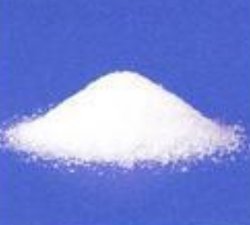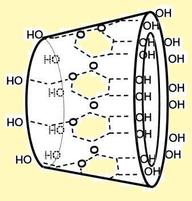
Dextrin is a type of low molecular weight carbohydrate produced by modifying starches. The starches can be selected from corn, potato, or even tapioca. These starches are treated by various enzymes or acid hydrolysis and form a starch-type sugar. They are all water soluble but have some very distinct characteristics. In the Popular Science article, the author used a relatively easy to obtain maltodextrin. But, he also suggests that a cyclodextrin might be a better choice. And, he is absolutely correct with that assumption. We can think of maltodextrin as a one dimensional powder that has some fur-like extremities that absorbs fluids and is used in the food industry to soak up oils. It is a short chain starch sugar and is used as a food additive as well. It can be sweet like a sugar or have no taste at all. Cyclodextrin is a totally different and is also called a cycloamylose, made of molecules bound together in a ring. But, cyclodextrins have a neat little trick that makes them ideal for making alcohol into a powder.

Cyclodextrins are becoming more readily available so there will be more homemade alcohol powders in the future. Whether or not the packaged alcohol even makes sense will be determined by consumers.
 RSS Feed
RSS Feed
